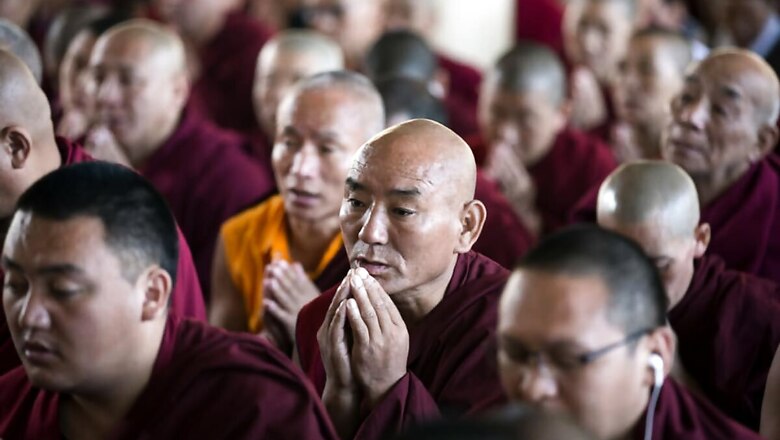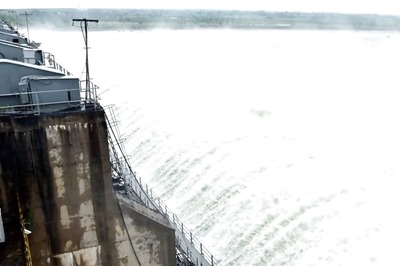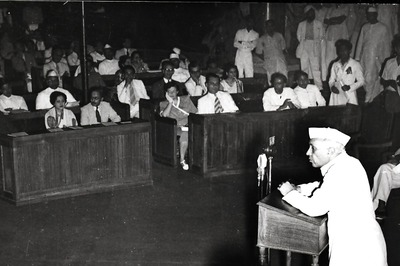
views
The United States has reiterated that it will stand with the Tibetan cause. The US State Department has said that the Joe Biden administration would continue to press China on human rights violations in Tibet. Last month, America passed The Tibetan Policy and Support Act (TPSA). The new US law directly challenges the Chinese repression of Tibetan people. TPSA calls for China to respect Tibetan religion, culture and tradition and is a message to other countries to take the Tibetan cause and Chinese human rights violations in Tibet more seriously.
Human rights violations in Tibet
According to well-known Chinese scholar Adrian Zenz’s findings, which have also been corroborated by news agency Reuters, Tibet is fast becoming the next Xinjiang. Xi Jinping has warned to make Tibet an impregnable fortress and China is replicating the Xinjiang model in Tibet with the establishment of mass internment camps.
According to the report, China has built military-style training centres in Tibet which are targeting rural Tibetans. Dr Andrew Martin Fischer, an associate professor at the International Institute of Social Studies (ISS) at The Hague, who has extensively written on Tibet’s demography, says Tibetans are predominantly a rural population. According to the Chinese Census 2000, 87.2% Tibetans in all Chinese provinces existed in rural areas. In Tibet Autonomous Region (TAR) they make up 97.7% of the total population in rural areas.
The Chinese government is targeting these rural Tibetans as the resistance to the Chinese rule is stronger in the backwoods. Due to Tibet’s rough terrain, climate conditions and poor connectivity, large-scale agrarian migration by the Han Chinese has failed in rural areas of Tibet, and so the scope of China’s draconian interference in rural Tibetan’s lives is not as deep as it is in urban parts of Tibet. The expression for freedom is stronger in rural Tibetan areas.
An estimated 500,000 Tibetans were trained till July last year in these training centres and many of them have been sent to other parts of China to be engaged in low-paying jobs.
Another devious design by China has been the forced mass movement of rural Tibetans to the urban areas. According to Free Tibet, a Britain-based pro-independence Tibetan group, China has forced to move around two million Tibetans from rural areas to urban settlements since its control of Tibet. Once in urban settlements, under the Chinese eyes, they are forced to follow what the Chinese government wants.
Xinjiang-like coercion
This Chinese coercion is replicates the mass internment centres of Xinjiang, which China calls re-education centres but critics call concentration camps. Millions of Uighur Muslims in these camps are kept under continuous watch and are subjected to demographic and cultural genocide.
The military-style training centres in Tibet may have a similar design. If you cannot draw Tibetans away from the sense of independence they have and the religion and culture that they see as the guiding spirit of independence, then crush them demographically.
While as per the Dalai Lama’s claim China has killed over 1.2 million Tibetans so far, this may be the final Chinese solution to force Tibetans away from their motherland and their identity. A Tibetan population widely scattered across China, away from their land, religion and culture and deeply sucked into the lanes of Chinese industrialism, is the first step to make the grand Chinese design to turn Tibet into an ‘impregnable fortress’ a reality.
So, China’s future plans for Tibet will be: force rural Tibetans out of TAR or put them in mass internment camps, and, at the same time, fill the Tibetan cities with a Han Chinese population.
Mass urbanisation of Han Chinese
When we see the urbanisation rate of Tibetans, we find it is nowhere near to the Han Chinese population. The urbanisation rate of Tibetans in the Tibet Autonomous Region is just 15.2% while the Han Chinese population is rapidly taking over Tibetan cities with an urbanisation rate of 79.5%.
Fisher’s study was published in 2008, just two years after China opened the first rail line linking Tibet to the mainland in 2006 and is further extending it to the Tibetan borderlands and other Chinese provinces. The ‘Free Tibet’ movement says, quoting official statistics, that 2,000 to 3,000 Han Chinese migrate to Tibet daily through the railway line. Once the railway line connects to a wider area of Tibet, we can expect a surge in this mass migration figure.
According to a report in The Economist magazine, the Han Chinese population of Tibetan capital Lhasa was 17% in the year 2000 that increased to 22% according to Chinese Census 2010. And with trains in service now, we can expect a much higher figure when the next Chinese Census comes out.
China is also forcing Tibetans to marry non-Tibetans, mostly Han Chinese people. Census 2010 shows that around 10% of Tibetan households had at least one non-Tibetan family member. So, it is evident that China is driving outsiders not just into Tibetan cities but also in Tibetan families to have a solid network of Chinese mainland people to further suppress the Tibetan unrest.
Read all the Latest News, Breaking News and Coronavirus News here




















Comments
0 comment